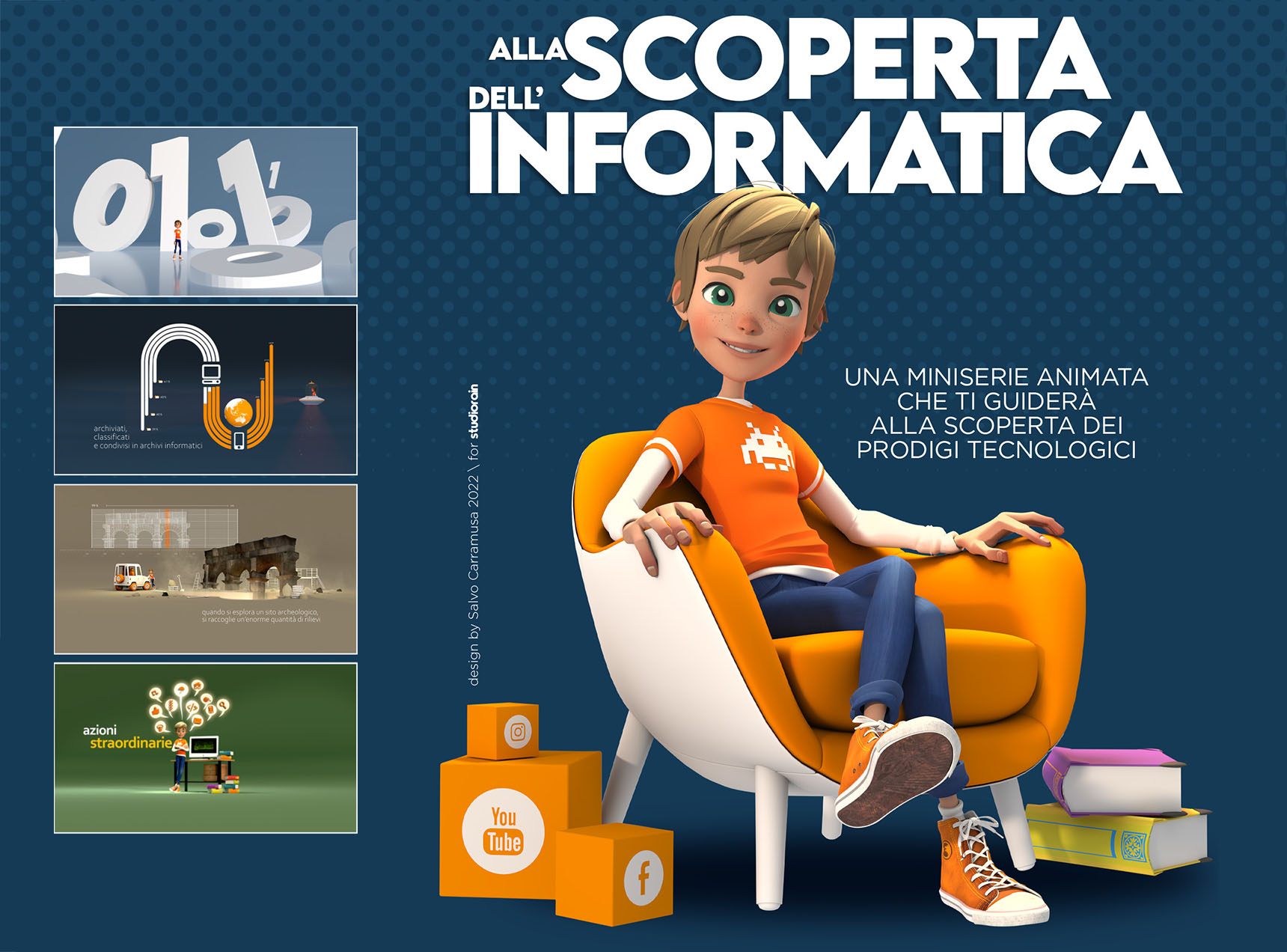Informatics in History
Let’s retrace, in brief, the origin and development of Informatics. You’ll be surprised!

The project presents short journeys, rendered in the form of artistically animated mini clips, of the character “Proxy” across various aspects of Informatics, what it is, what it does, where it comes from.
In the world of Informatics, “Proxy” means “intermediary”, something that acts in the name and on behalf of another, in a situation, a space, a condition where the other cannot be.
In that capacity, Proxy makes short forays into the world of Informatics and tells us stories about them. The range of possible journeys is innumerable, so large and varied as to make the collection of this project essentially infinite. For the moment, we offer six mini clips, accompanied by some resources for explanation and further information.
Science studies reality, visible and invisible to our eyes, to understand how it works. Technology uses that knowledge to “amplify” human capabilities, strength, speed, resistance, accuracy, …
The driving force of science is curiosity, the desire to understand. The method of science combines observation, experimentation, and the continuous questioning of hypotheses and explanations.
Informatics studies the way in which human thought can be expressed in an algorithmic, “procedural” form, and executed by automatic “executors”. The foundation of Informatics is the principle of “computability”, according to which an ever increasing quantity of “problems”, i.e. questions, decisions, actions, can be solved, i.e. “actuated”, through a mechanical process, automatically executable.
The technology that arises from Informatics offers us an astounding range of “automatic calculation” tools, which do things with us and for us, including responding and “dialoguing”.
The term “calculation” confuses us, because its manifestation visible to us does not seem to correspond to calculation in the way of mathematics and arithmetics that we learned at school. Deep down however, they do just that, while on the surface they act on “things” that are much more familiar and immediate to us: writing, speaking, reproducing, acting, …
With the project “A voyage to the discovery of Informatics” we wish to take you on a journey into the secrets and mechanisms of that incredible science that is Informatics.
Let’s retrace, in brief, the origin and development of Informatics. You’ll be surprised!
One of the many ramifications of Informatics are the “social networks” that interconnect people with common interests, rapidly, directly, and engagingly, regardless of the geographical distance among them. This leaves “digital traces” that have consequences …
By creating reversible correspondences between (physical and logical) things and their numerical representations, Informatics helps to create real “digital twins”, useful in many fields and for many purposes.
Another surprising area where Informatics helps sciences and professions that may seem very distant from it, is Archaeology. Let’s see how that happens.
Informatics contributes to research in many other Sciences, in surprisingly useful and original ways. Let’s look at the case of Bioinformatics: Informatics at the service of life sciences.
Informatics is a large and richly varied world: its products surround us, accompany us, assist us in many of our professional, personal, and social activities. Let’s see how.